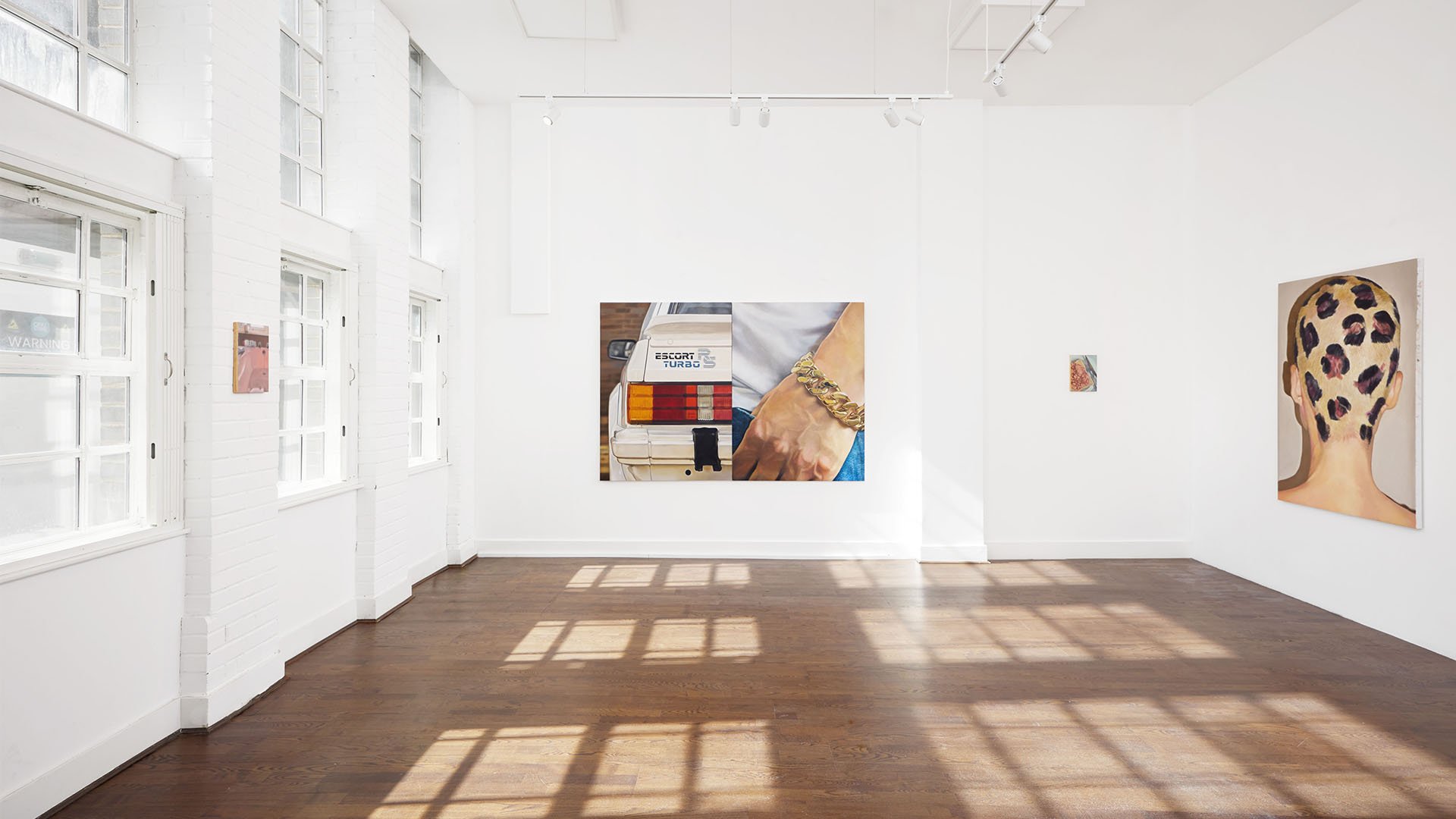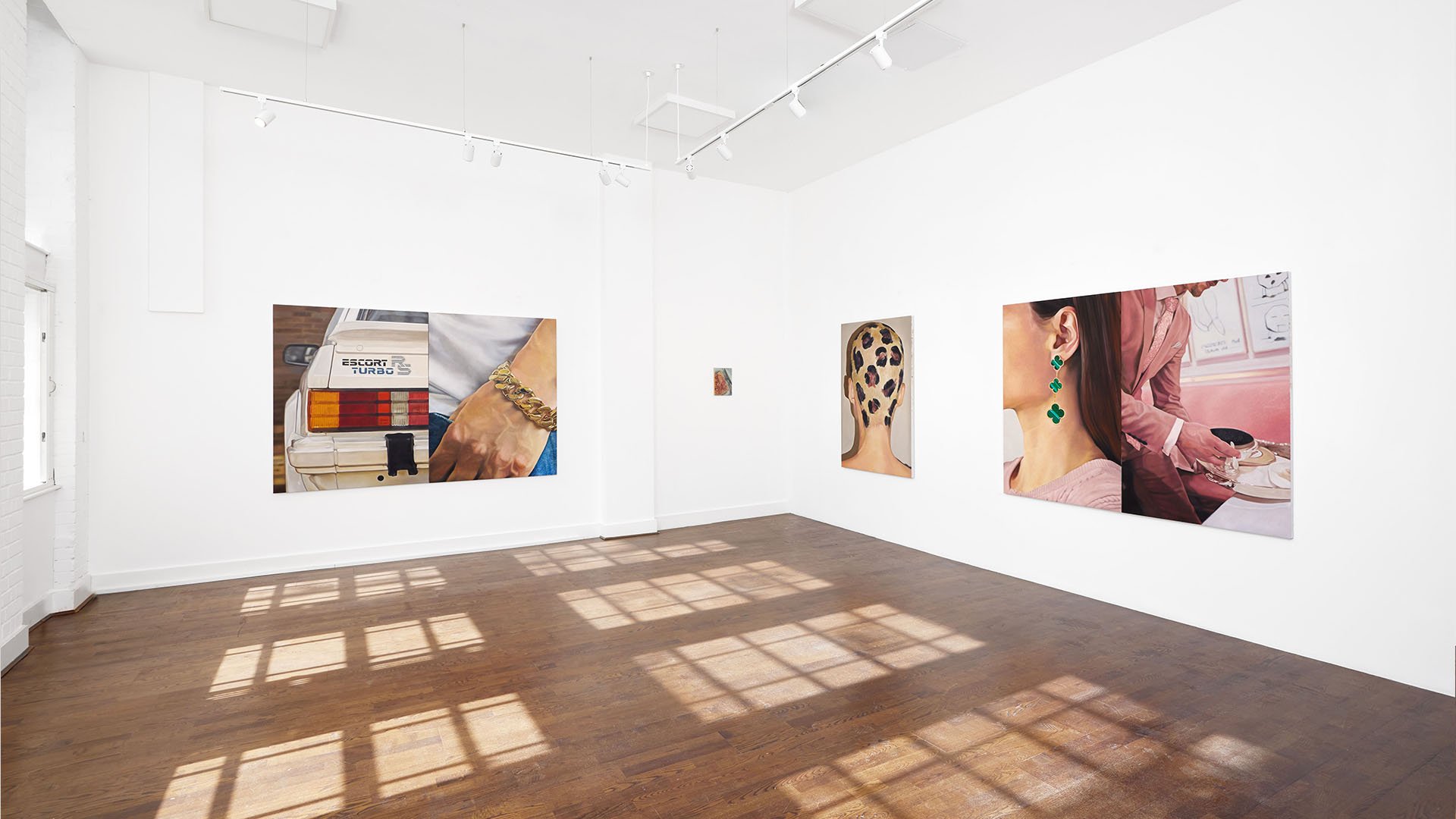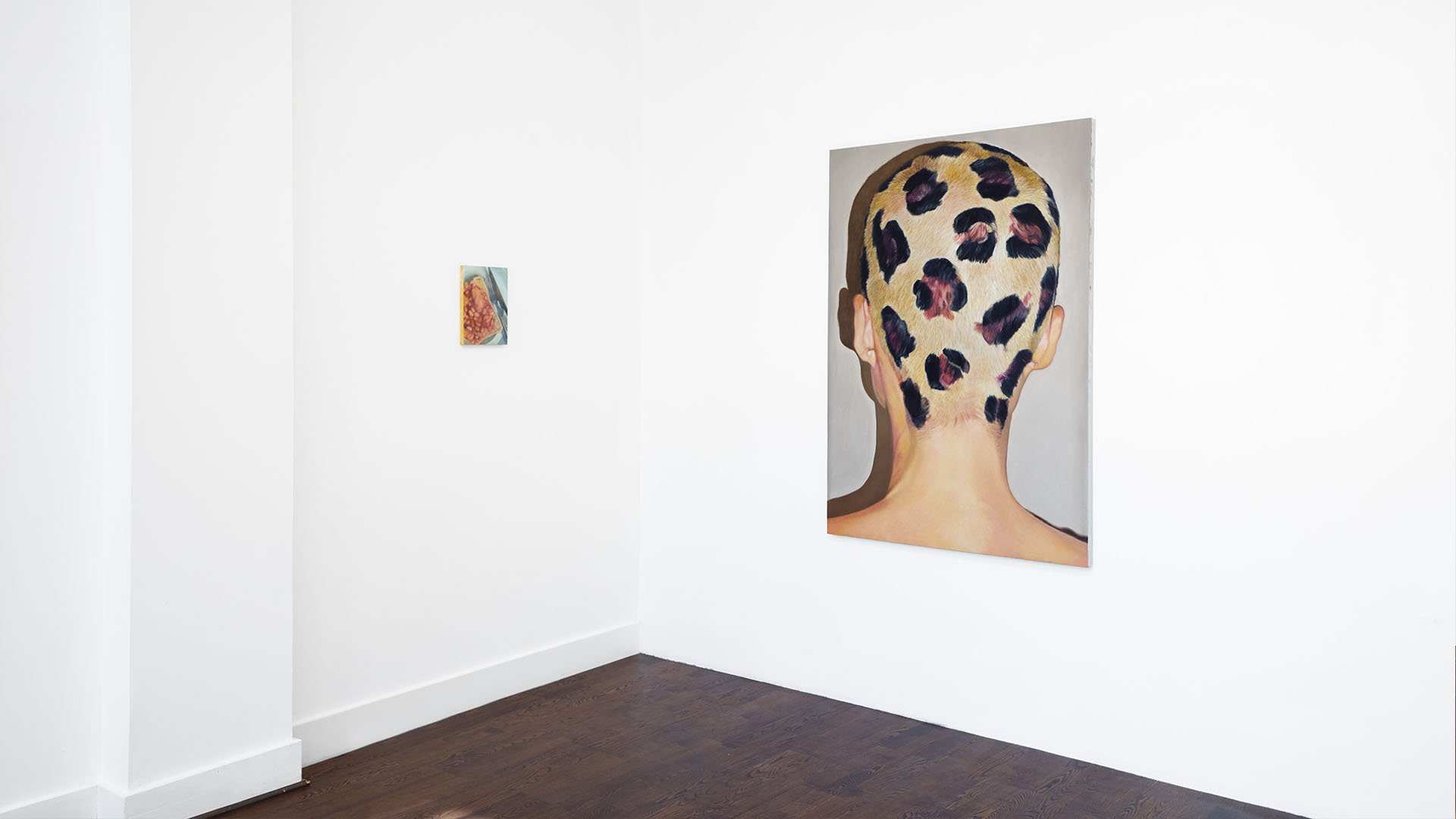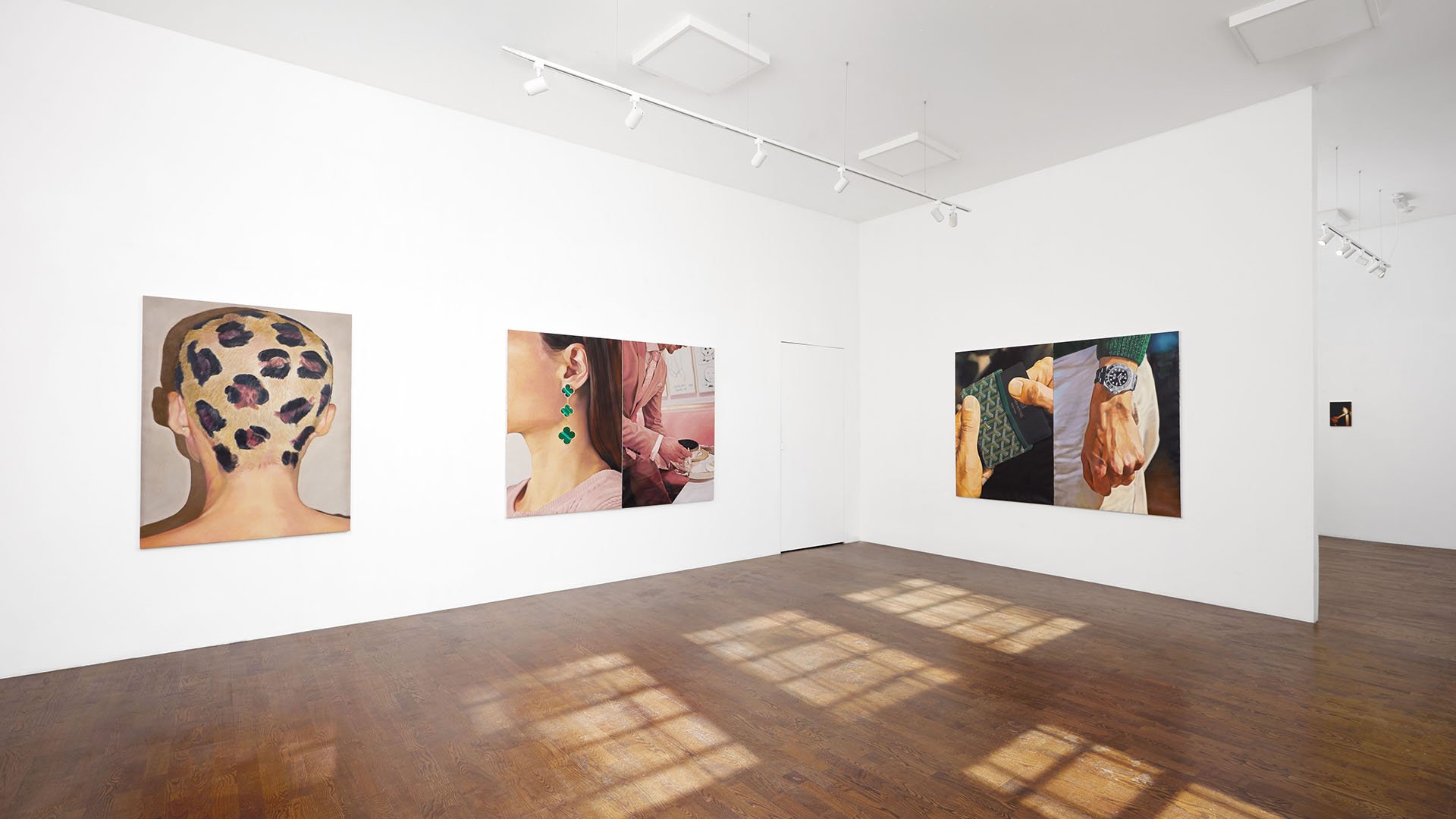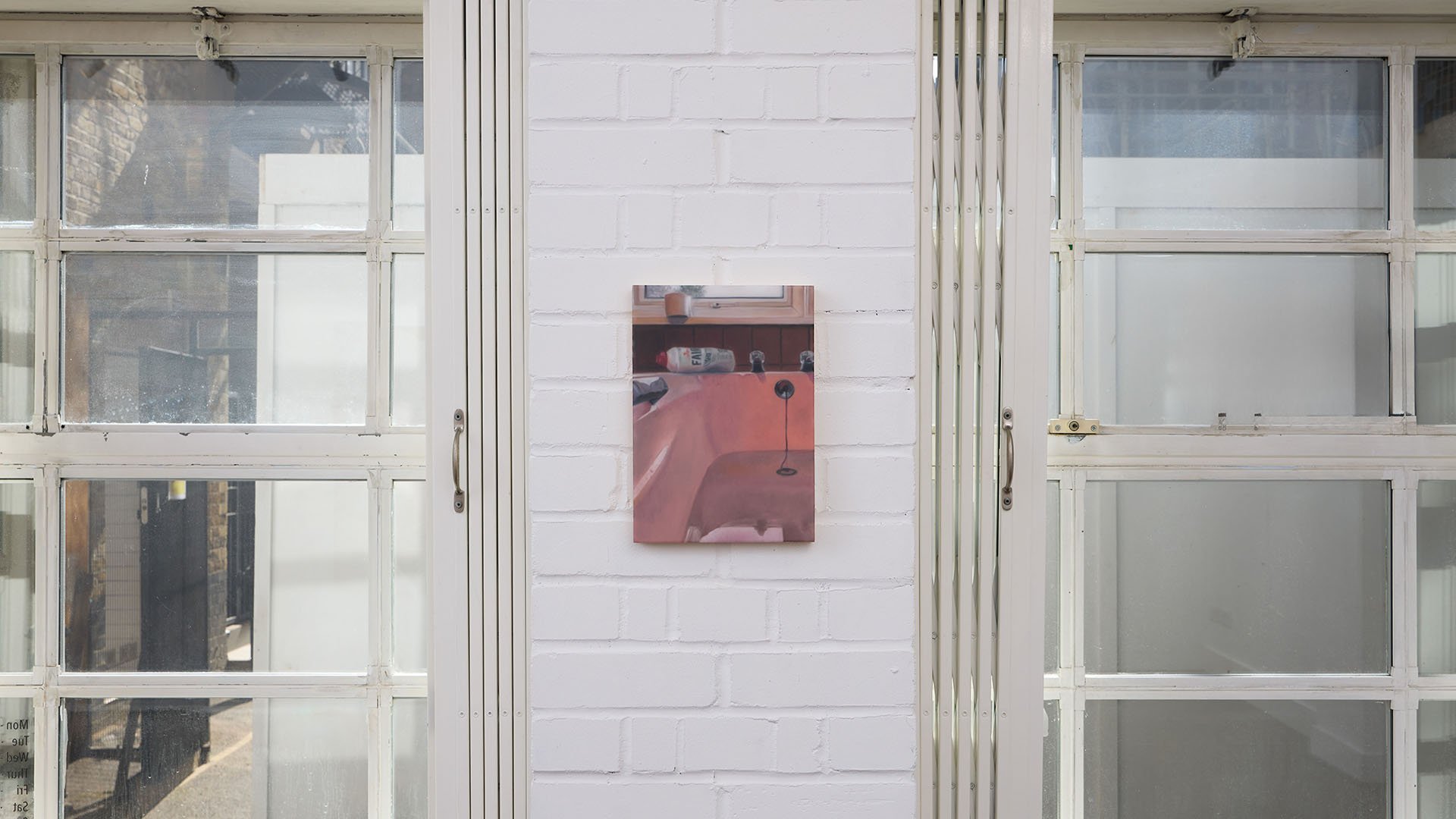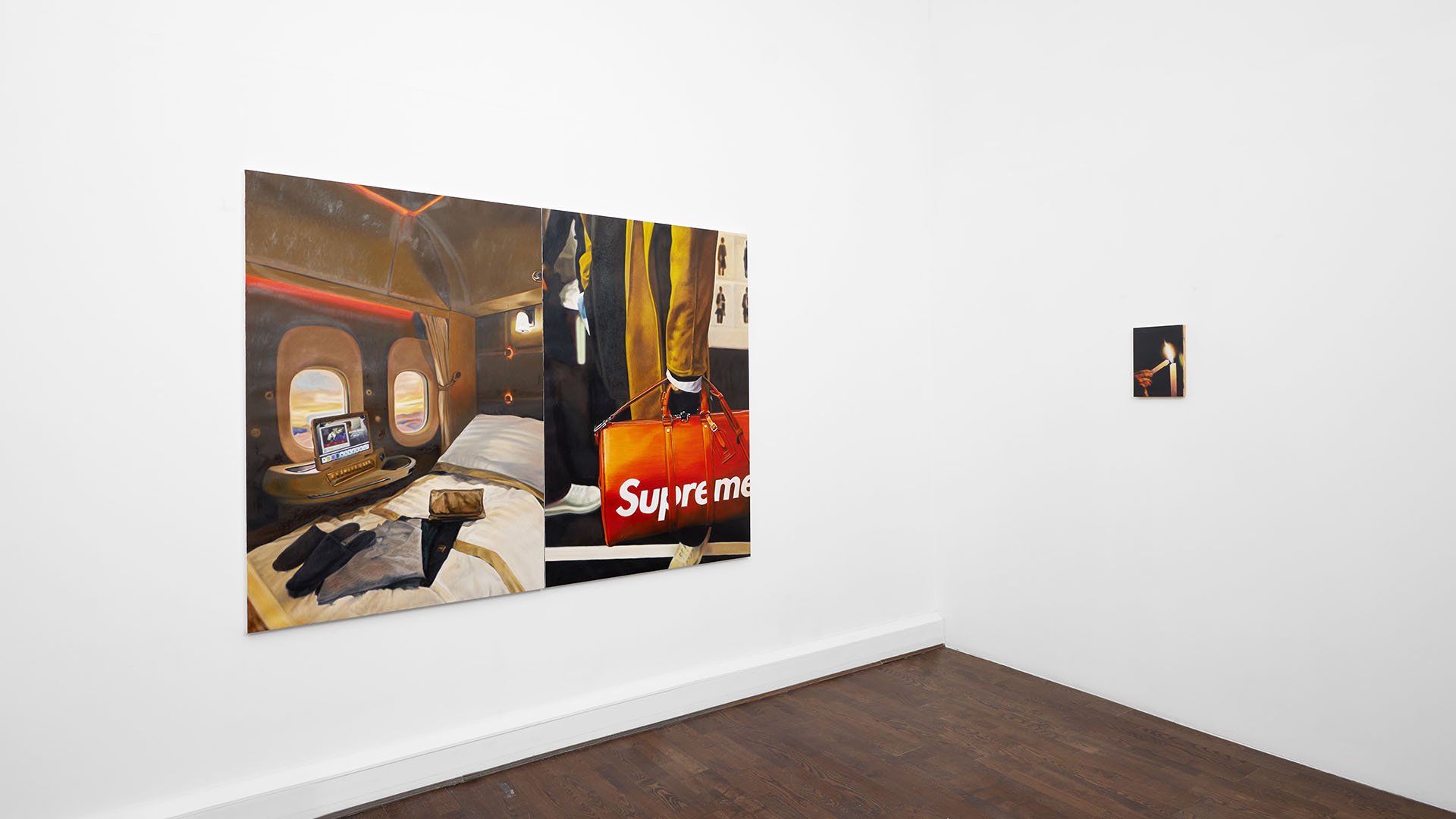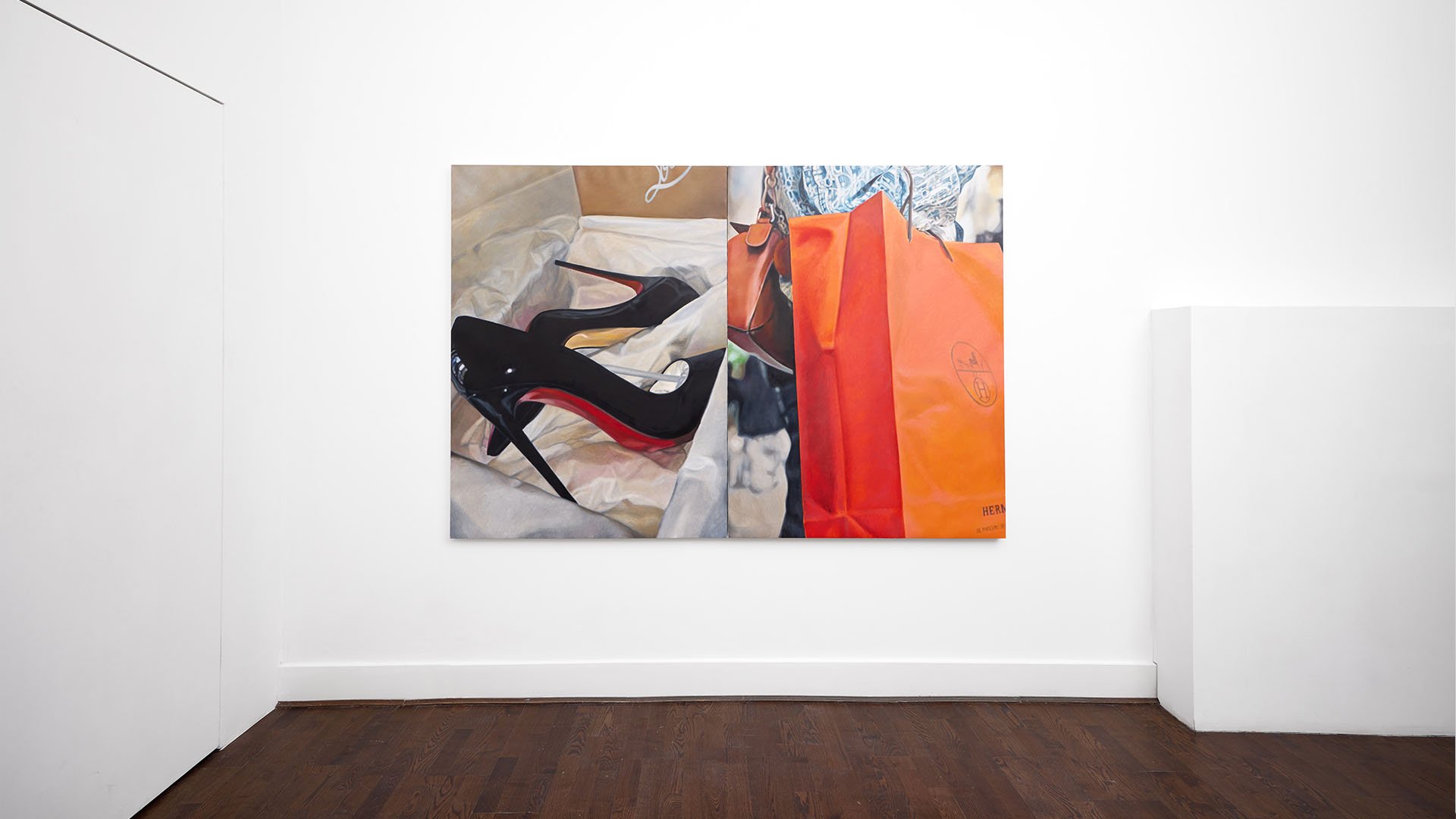
Keeping Up With The Corbies
An exhibition of works by Benjamin Levy
4 April - 8 March, 2025
Private View: Thursday, 3 April, 6 - 8 pm
Gifts and Poisons
An essay by Matthew James Holman
Benjamin Levy’s work interrogates the intricacies of our desires in an age when they have increasingly been manipulated and the objects of those desires aggregated into a seemingly endless carousel of images. The revival of figurative painting in recent years, partly as a corrective to the domination by stealth of visual information on digital screens, has been accompanied by a well-meaning critique of consumerism, greed, and over production, in which the working person and their desires are ridiculed. Levy sidesteps this cliché, not only because he is–dispiritingly–one of only a handful of noteworthy figurative artists working today who are from work- ing-class backgrounds but because he recognises that wealth is not absolute; it is relative to desire. Rather than teasing the consumers, we may scrutinise a society which encodes unspoken assumptions about status, whereby the experience of being waited on in a first-class plane suite or being served caviar at an exclusive May- fair club feels psychologically necessary and rewarding, a society where respect is entirely dependent on displays of having plenty. Rather than a tale of mindless greed, Levy’s pictures remind us that the history of luxury could be more precisely understood as a record of emotional fragility. Pressured by the judgement and contempt of others, the wealthy and the poor alike have felt compelled to adorn themselves with extraordinary luxuries, livestreamed on social media, to announce that they, too, deserve to be loved.
Levy takes of the algorithms and advert-driven content of social media for his subject in the same way that James Rosenquist took the mid-century billboard, blurring the distinctions between high art and the ‘new media’ of proliferating visual representations in the consumer society of his own time. His exquisite attention to the sensorial subtleties of touch and gesture, combined with our immediate recognition that these works have been painstakingly laboured over for weeks and months, forces us to reflect upon how and why we look at the free dispersal of images on social media and online. In The Divine Trickster (2025), with its title riffing on the lucky Olympian deity and son of Zeus who provided the name for the eponymous French luxury brand, Levy offers an extraordinary command of touch. It is as though we can almost track the folded perforations along the side of the lavish orange bag or caress the cloud-like creases of wrapping paper carrying the jet-black Louboutin stilettos. Their extraordinary price tags encourage us to see these objects as special gifts, perhaps for a wife or a lover, and as such remind us that there can never be any completely selfless gift; all gifts are entered into a cycle of debt and exchange and, as Jacques Derrida reminds us, can just as easily become a ‘poison’ (as in the German where ‘Gift’ translates as ‘poison’).
It is telling that there is never more than one person in these pictures, and we never see their eyes. By zeroing in on a golden bracelet or a clenched fist with a Rolex, we are kept at one remove from their wearer’s subjectivity; denied a face-to-face encounter with the other, we are drawn into scenes of relationality in which we cannot relate on a human level. It is less that these figures are reduced to merely projecting materialist values (and so the paintings standing as a critique of their shallowness or vanity), but that we see their adornments and nothing else; it is us, as the viewer of these pictures, who judges who they might be. As such, we are reminded that the attentions of others matter to us because we are afflicted by a perpetual unknowability as to our own value in the world and, as a result, how others see us–and especially if they admire us, recognise us as possessing good taste, or recognise us to have the means that they do not have–play a determining role in how we see ourselves.
Levy recalls moments when he would eat baked beans on toast for a week so that he could spend half his earnings at an expensive restaurant on the weekend, as memorialised in I Don’t Have a Bean (2025). The desire for high status is never more overwhelming than in situations where one’s ‘ordinary’ life–the drudgery of a job in which we fail to find personal fulfilment, and where most of our waking lives are bought for an hourly wage–fails to answer the human need for dignity and a basic level of material comfort. It is revealing, then, that while most of these paintings depict the objects and symbols of extreme luxury, as epitomised by the iconic emerald Van Cleef & Arpels earrings in Black Gold (2025), it is not luxury per se which is Levy’s subject but the experience of yearning. Floundering in mimetic desire, we often want what other people have for no other reason than we wish to believe that meaning can be simply bought for a price and displayed for the world to see. In the case of Black Gold, the closest of these works to a conventional advertisement detail shot, the artist has superbly mastered the gradients of light on the earrings, those beautiful objects of our gaze; the figure’s pink knitwear is conversant with the server’s suit.
Mimetic desire is, of course, contingent. In Boys and Their Toys (2025) Levy does not depict a Ferrari or a Lamborghini but a white Ford Escort Turbo RS, the absolute symbol of high status in the working-class suburbia of his youth. In Bare Essentials (2025) he features a pink hoodie with the branding ‘Essentials: Fear of God’ on the back. It is an ironic coincidence that this text refers to the value system of an earlier period in British history, a time when believers sublimated their temporal anxieties to a force far greater than themselves and recognised how little of what agitated them made any difference when judged against eternity. Of course, throughout human history objects have been fetishised to enforce and maintain social hierarchies. Levy’s paintings do not compel us to turn to religion for answers, but they do ask us to evaluate where we source meaning in our lives and if the things we desire, once fulfilled, will really provide us with what we want. Above all, these paintings remind us that every time we covet something we cannot afford, we grow poorer, whatever our resources. Perhaps, then, walking out of this exhibition you will recognise the opposite to be true: every time we feel satisfied with what we have, we can believe ourselves wealthy.



